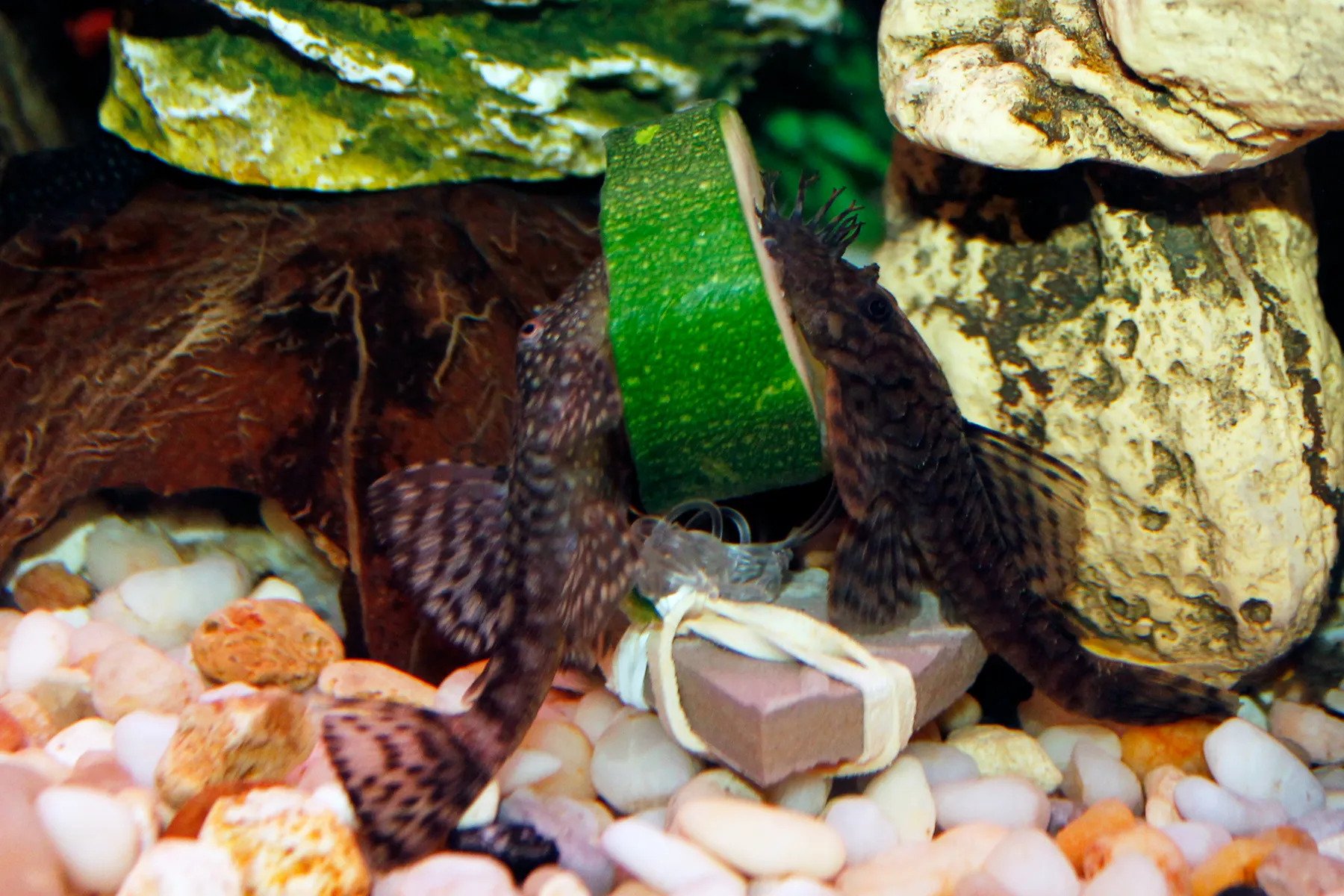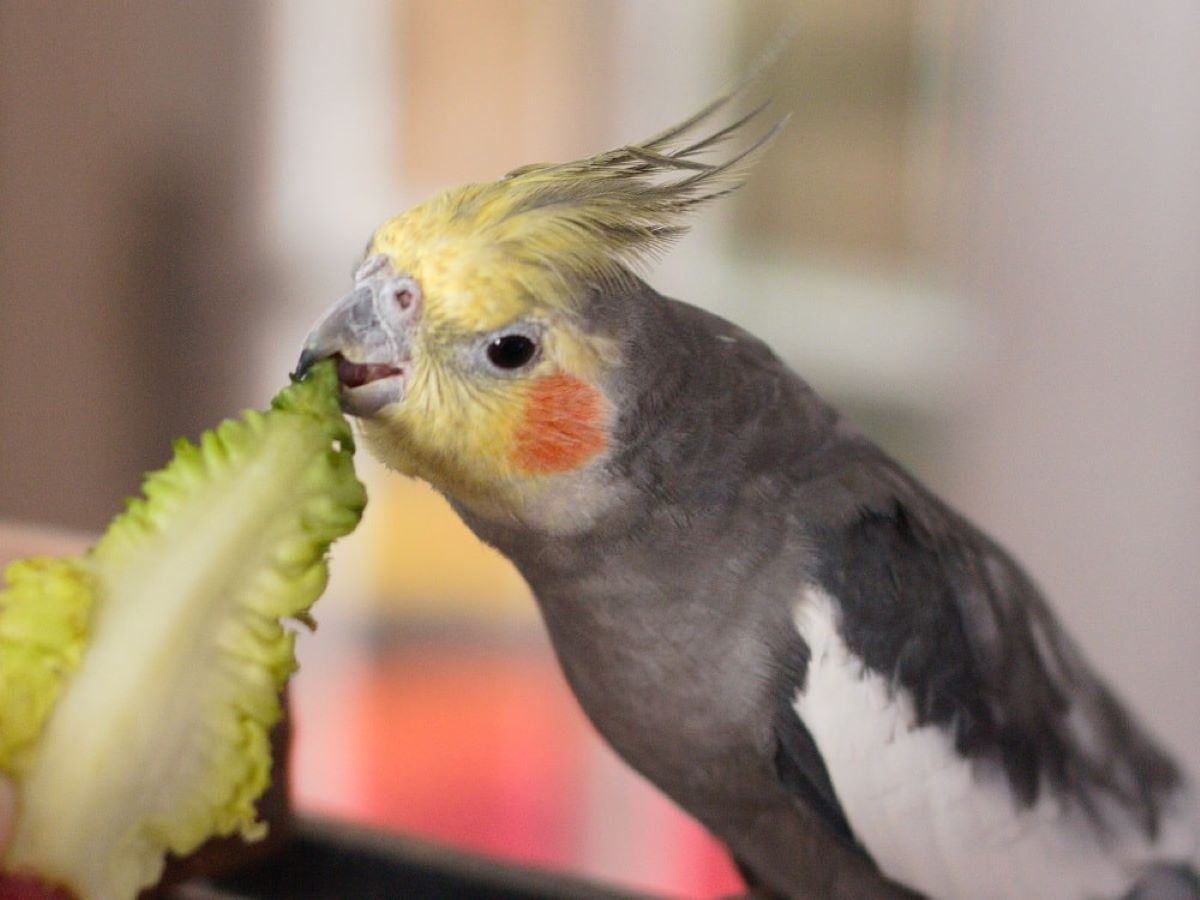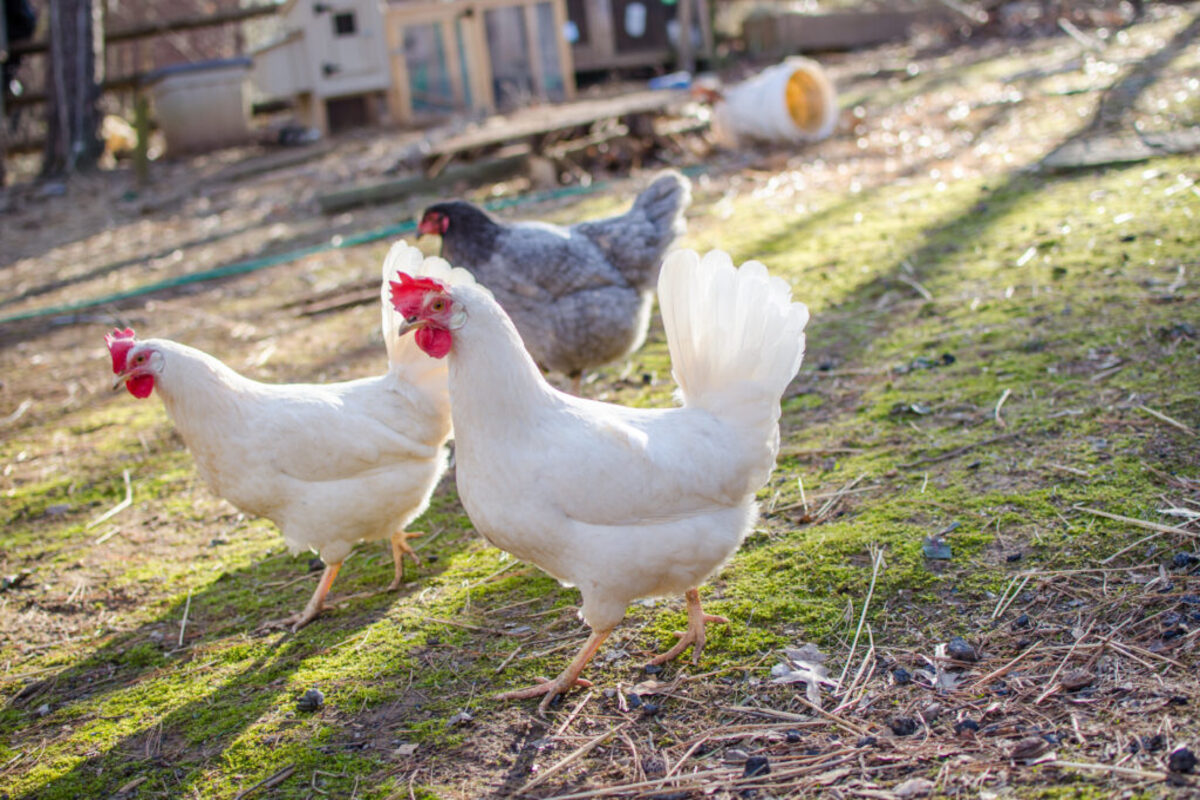Home>Gardening News and Trends>Latest News>What Insects Can Venus Fly Traps Eat


Latest News
What Insects Can Venus Fly Traps Eat
Published: December 5, 2023
Discover the latest news on what insects Venus Fly Traps can eat. Explore the fascinating world of these carnivorous plants and learn how they catch their prey!
(Many of the links in this article redirect to a specific reviewed product. Your purchase of these products through affiliate links helps to generate commission for Chicagolandgardening.com, at no extra cost. Learn more)
Table of Contents
Introduction
Venus Fly Traps, known for their unique ability to catch and digest insects, are fascinating plants that captivate the imaginations of many. With their iconic snap traps and carnivorous nature, these plants have become popular additions to botanical collections around the world.
But have you ever wondered, what insects can Venus Fly Traps actually eat? In this article, we will explore the anatomy and diet of Venus Fly Traps, discover which insects are suitable for these carnivorous plants, and provide some essential tips for feeding them to ensure their well-being.
First, let’s delve into the anatomy of Venus Fly Traps. These plants have specialized leaves, shaped like traps, which contain tiny trigger hairs on their inner surfaces. When an insect touches these hairs, it triggers a remarkable feeding mechanism.
Upon trigger activation, the trap rapidly closes, trapping the insect inside. The trap then begins secreting digestive enzymes to break down the trapped prey. This process can take several days to a couple of weeks, depending on the size of the insect.
To sustain their growth and development, Venus Fly Traps rely on a diet that consists mainly of small insects and arthropods. The plants extract vital nutrients, such as nitrogen and phosphorus, from their prey, compensating for the nutrient-poor soils in their natural habitats.
Now that we understand the basic anatomy and feeding mechanism of Venus Fly Traps, let’s explore the insects that are suitable for their consumption. These plants are primarily adapted to capture small, crawling insects that can fit within the confines of their traps.
Continue reading to discover the common prey of Venus Fly Traps and the insects you should avoid feeding them.
Anatomy and Diet of Venus Fly Traps
Venus Fly Traps, also known as Dionaea muscipula, are native to the boggy areas of North and South Carolina in the United States. These fascinating plants have evolved to survive in nutrient-deficient soils by developing a carnivorous diet.
One of the most distinctive features of a Venus Fly Trap is its specialized leaves, which are modified into snap traps. Each trap consists of two lobes that are connected by a hinge. The inner surfaces of the lobes contain trigger hairs, which, when touched by an insect, initiate the trapping mechanism.
When an unsuspecting insect comes into contact with the trigger hairs, the trap snaps shut in a fraction of a second. The rapid closure is a result of a specialized cellular mechanism that creates hydraulic pressure, similar to how a finger snap works.
Once the trap is closed, the real feeding process begins. The inner surface of the trap secretes digestive enzymes that break down the protein of the captured prey. These enzymes are similar to those found in the human digestive system, but much more efficient in breaking down insect matter.
The digestion process takes time, usually over a period of several days to a couple of weeks, depending on the size of the prey. Once the digestion is complete, the trap opens up again to reveal the indigestible parts of the insect, such as the exoskeleton, which is typically blown away by the wind or washed away by rain.
The diet of a Venus Fly Trap consists mainly of small insects and arthropods, such as flies, gnats, ants, spiders, and beetles. These plants have evolved to have a relatively limited range of prey due to the size and structure of their traps. They are more adapted to capturing crawling insects that can fit within the confines of the traps.
This specialized diet provides Venus Fly Traps with essential nutrients, particularly nitrogen and phosphorus, which are deficient in their native soil. By consuming insects, these plants extract the necessary nutrients for their growth and development, allowing them to survive in nutrient-poor environments.
Feeding is an energy-intensive process for Venus Fly Traps, and it is important to provide them with an adequate supply of prey to ensure their well-being. In the next section, we will explore the insects that are suitable for feeding Venus Fly Traps to maintain their health and vigor.
Insects Suitable for Venus Fly Traps
Venus Fly Traps have evolved to capture and consume a wide variety of insects and arthropods. However, not all insects are suitable for feeding these fascinating plants. To ensure the health and longevity of your Venus Fly Trap, it is important to choose suitable prey that can fit within the size limitations of their traps.
Here are some of the insects that are considered suitable for feeding Venus Fly Traps:
- Flies: Common house flies, fruit flies, and small flying insects are ideal and readily available food sources for Venus Fly Traps. These insects are small enough to fit within the traps and provide a good source of nutrition for the plant.
- Gnats: Small flying insects like fungus gnats, midges, and mosquitoes are also suitable prey for Venus Fly Traps. These insects are often found around damp environments and can be easily caught by the traps.
- Ants: Although ants are usually larger than the ideal prey size for Venus Fly Traps, small ants can still be suitable as they can fit within the traps. Be cautious not to feed your Venus Fly Trap with large ants, as they may cause damage to the delicate trapping mechanism.
- Spiders: Small spiders, like tiny jumping spiders or spiderlings, can be suitable prey for Venus Fly Traps. They provide a good source of protein and can be easily caught within the traps.
- Beetles: Some small beetles, such as carpet beetles or grain beetles, can be suitable prey for Venus Fly Traps. These insects are generally small enough to fit within the traps and provide a good source of nutrients.
It is important to note that Venus Fly Traps rely on live insects for their nutrition. Feeding them dead insects or other forms of food, such as meat or plant-based materials, is generally not recommended. Their trapping mechanism is designed to respond to live prey, and they are best equipped to extract nutrients from insects.
While these insects are suitable for feeding Venus Fly Traps, it is crucial not to overfeed them. Overfeeding can strain the plant’s resources and may lead to rotting or damage to the traps. Aim to feed your Venus Fly Trap one or two insects per trap every 1-2 weeks, depending on their size and growth rate.
Now that we have explored the insects suitable for Venus Fly Traps, let’s take a look at the common prey these plants catch in their natural habitats and why some insects should be avoided as prey.
Common Prey of Venus Fly Traps
Venus Fly Traps, with their carnivorous nature, have developed a highly specialized mechanism to capture and digest insects. In their natural habitats, these remarkable plants encounter a variety of prey that they have adapted to catch. Let’s explore some of the common prey that Venus Fly Traps capture to sustain their nutritional needs.
Flies are one of the most common prey for Venus Fly Traps. House flies, fruit flies, and other small flying insects are often attracted to the sweet nectar-like secretion on the traps’ surfaces. As these flies land on the traps in search of food, the trigger hairs are stimulated, causing the rapid closure of the trap and entrapping the insect inside.
Another common prey for Venus Fly Traps is gnats. These tiny flying insects, including fungus gnats and midges, are often found in damp environments. These insects are generally small enough to fit within the traps and provide a valuable source of nutrition for the plant.
Ants, although larger than the ideal prey size for Venus Fly Traps, can also become caught in the traps. While larger ants may cause damage to the traps, smaller ants can be successfully captured. These ants are often lured into the traps by the sweet-smelling secretions and get trapped when they come into contact with the trigger hairs.
In their native habitats, Venus Fly Traps may also encounter small spiders. These spiders, such as tiny jumping spiders or spiderlings, may inadvertently fall into the open traps while exploring the surroundings. Once inside, they become ensnared by the trigger hairs and become part of the plant’s meal.
Beetles, particularly smaller species like carpet beetles or grain beetles, can also fall victim to Venus Fly Traps. These crawling insects may come into contact with the trigger hairs while navigating the vicinity of the traps, resulting in their capture and assimilation into the plant’s diet.
While these are some of the common prey that Venus Fly Traps consume, it is worth noting that these plants have a limited range of prey due to their trapping mechanism and size limitations. They are primarily adapted to catching small, crawling insects that can fit within the confines of their traps. Other larger insects or non-arthropod prey are generally unsuitable.
Now that we understand the common prey of Venus Fly Traps, let’s explore the insects that should be avoided as prey to ensure the well-being of these fascinating plants.
Insects to Avoid Feeding Venus Fly Traps
Venus Fly Traps, while highly efficient at capturing and digesting insects, have specific size limitations when it comes to their prey. It is essential to select suitable insects to feed them to ensure their health and prevent any harm to the plants. Here are some insects that should be avoided when feeding Venus Fly Traps:
1. Large beetles: Venus Fly Traps are generally not equipped to capture and digest large beetles. These insects are often too big for the traps and may cause damage or prevent them from closing properly. It is best to stick to smaller beetles that can fit within the traps.
2. Bees and wasps: Bees and wasps are generally not recommended as prey for Venus Fly Traps. These insects are larger and have the potential to damage the delicate trapping mechanism. Additionally, they can be more challenging to capture due to their fast movement and could potentially pose a threat to the plant if they become aggressive.
3. Butterflies and moths: Although butterflies and moths are visually appealing, they are not suitable prey for Venus Fly Traps. These insects are typically too large and have long legs and wings that can interfere with the proper closure of the traps. It is best to avoid feeding them to your Venus Fly Trap.
4. Dragonflies and damselflies: Dragonflies and damselflies are agile and swift-flying insects that are much too large for Venus Fly Traps. These insects can easily escape the traps or cause damage to the plant, so it is advisable to steer clear of using them as prey.
5. Larger ants: While small ants can be suitable prey for Venus Fly Traps, caution should be exercised when considering larger ants. Some larger ant species may struggle or cause damage to the traps when captured. Stick to smaller ants to minimize potential complications.
Remember, Venus Fly Traps are adapted to catch small, crawling insects that can fit within the confines of their traps. Providing them with appropriately sized and suitable prey will help ensure their successful capture, digestion, and overall well-being.
It is important to note that Venus Fly Traps rely on live insects for their nutrition. Feeding them dead insects or other forms of food, such as meat or plant-based materials, is generally not recommended. Their trapping mechanism is designed to respond to live prey, and they are best equipped to extract nutrients from insects.
Now that we know the insects to avoid, let’s move on to some essential tips for feeding Venus Fly Traps to maintain their health and vigor.
Tips for Feeding Venus Fly Traps
Feeding Venus Fly Traps is an important aspect of their care and plays a crucial role in their overall health and growth. Here are some essential tips to consider when feeding these intriguing carnivorous plants:
1. Use appropriate-sized prey: Select insects that are small enough to fit within the traps of your Venus Fly Trap. This will ensure successful trapping and digestion. Avoid feeding them insects that are too large or exceed the size limitations of their traps.
2. Choose live prey: Venus Fly Traps are adapted to respond to live prey, triggering the trapping mechanism. It is best to provide them with live insects rather than dead ones. Live prey will stimulate the plant and enable it to extract nutrients more effectively.
3. Observe feeding frequency: Aim to feed your Venus Fly Trap one or two insects per trap every 1-2 weeks, depending on its size and growth rate. Overfeeding can strain the plant and may lead to rotting or damage to the traps. Find a feeding schedule that works best for your plant’s needs.
4. Rotate feeding locations: To ensure all traps receive optimal nutrition, rotate the placement of insects within your Venus Fly Trap. This will help distribute the prey evenly among the traps and prevent overcrowding in a single area.
5. Avoid unnecessary touching: Try not to touch the traps unnecessarily, as this can trigger the closing response and waste energy. Venus Fly Traps have limited energy reserves, so it is important to minimize unnecessary activation of their trapping mechanism.
6. Provide ample light: Venus Fly Traps require bright, indirect sunlight to thrive. Place them in a well-lit area, such as a south-facing window, to ensure they receive adequate light energy for photosynthesis. Sufficient light is vital for their overall health and the production of enzymes for digestion.
7. Use filtered or distilled water: Venus Fly Traps are highly sensitive to the quality of water they receive. It is best to use filtered or distilled water when watering your plant. Treated tap water may contain chemicals that can harm the plant or disrupt its natural balance.
8. Maintain high humidity: These plants are accustomed to humid environments in their natural habitats. To provide the ideal conditions, increase humidity around your Venus Fly Trap by placing it on a tray filled with water and pebbles or using a humidifier.
By following these tips, you can ensure your Venus Fly Trap receives the proper nutrition it needs to thrive. Remember to monitor the condition of the traps and adjust the feeding frequency or prey size accordingly. Providing the right care will result in healthy, vibrant, and fascinating plants that continue to capture and digest their prey with ease.
Now that we have covered essential feeding tips, let’s wrap up this article with a summary of what we’ve learned about feeding Venus Fly Traps.
Conclusion
Venus Fly Traps are captivating plants that capture our imagination with their unique ability to catch and digest insects. Understanding the anatomy and diet of these carnivorous plants is crucial for their proper care and maintenance.
We explored the specialized anatomy of Venus Fly Traps, with their snap trap leaves and trigger hairs, which allow them to capture and digest insects efficiently. These plants have evolved to rely on a carnivorous diet to compensate for nutrient deficiencies in their native habitats.
We also delved into the types of insects that are suitable for Venus Fly Traps, including flies, gnats, ants, spiders, and smaller beetles. These insects provide essential nutrients for the plants’ growth and development, and feeding them live prey is essential for their well-being.
However, it is important to avoid feeding Venus Fly Traps with insects that are too large, such as bees, wasps, and larger beetles, which can cause damage or prevent proper trap closure. Additionally, butterflies, moths, dragonflies, and damselflies should be avoided due to their size and interference with the trapping mechanism.
To ensure successful feeding, remember to provide appropriate-sized prey, observe a feeding schedule, and rotate feeding locations within your Venus Fly Trap. Avoid unnecessary trap touching and provide the plant with ample light, filtered water, and high humidity for optimal growth.
Feeding Venus Fly Traps requires a delicate balance to maintain their health and prevent any harm to the plant. By following the tips provided, you can enjoy the fascinating behavior of these carnivorous plants while ensuring their vitality and longevity.
So, whether you’re a seasoned Venus Fly Trap enthusiast or a newcomer to the world of carnivorous plants, remember that feeding these captivating plants is a rewarding experience that allows them to thrive in your care.









